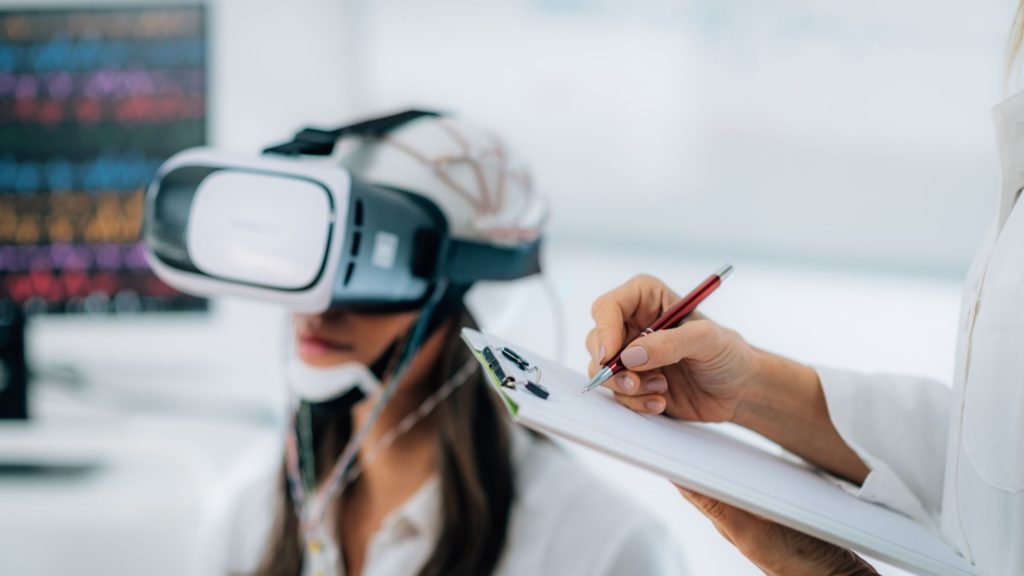Virtual reality (VR) is making significant strides in the field of therapy, offering innovative approaches to mental health treatment and rehabilitation. By immersing patients in controlled virtual environments, therapists can address various psychological and physical challenges in ways that traditional methods may not allow. This article explores the applications of VR in therapy, its benefits, challenges, and future potential.
Applications of VR in Therapy
Exposure Therapy: VR is particularly effective for exposure therapy, where patients confront their fears in a safe, controlled environment. This technique is often used to treat phobias, anxiety disorders, and PTSD.
Example: A patient with a fear of heights can experience virtual scenarios such as standing on a ledge or riding in an elevator, gradually desensitizing them to their fear.
Cognitive Behavioral Therapy (CBT): VR can enhance CBT techniques by allowing patients to visualize scenarios and practice coping strategies. Therapists can guide patients through virtual situations to help them develop healthier thought patterns.
Case Study: In a virtual environment, patients can simulate social interactions that trigger anxiety, helping them practice social skills and reducing discomfort.
Pain Management: VR is used as a distraction technique during medical procedures or chronic pain management. By immersing patients in engaging virtual environments, their focus shifts away from pain.
Example: Patients undergoing painful treatments can wear VR headsets to explore calming landscapes, reducing their perception of pain and anxiety.
Rehabilitation: For physical therapy, VR provides interactive exercises that promote movement and recovery. Patients can engage in virtual games that encourage physical activity and track their progress.
Example: Stroke patients can use VR to practice movements in a gamified environment, making rehabilitation more enjoyable and effective.
Benefits of VR in Therapy
Enhanced Engagement: VR captures patients’ attention in ways traditional therapy may not. The immersive nature of VR makes therapy more engaging, encouraging participation and adherence to treatment.
Safe Environment: VR allows patients to confront fears and practice skills in a safe space, reducing the risks associated with real-world exposure. This safety fosters a sense of control and security.
Personalized Treatment: Therapists can tailor VR experiences to meet individual patient needs, providing customized interventions that align with specific goals and challenges.
Objective Data Collection: VR platforms can collect data on patient interactions and progress, allowing therapists to track improvements and adjust treatment plans based on measurable outcomes.
Challenges of Implementing VR in Therapy
Despite its advantages, the integration of VR in therapy faces several challenges:
Cost of Technology: High-quality VR equipment and software can be expensive, limiting access for many therapists and patients. Affordability remains a barrier to widespread adoption.
Training for Practitioners: Therapists need training to effectively implement VR technology in their practice. A lack of familiarity with the technology can hinder its potential benefits.
Individual Variability: Not all patients may respond positively to VR therapy. Some individuals may experience discomfort, anxiety, or disorientation while using VR, necessitating careful screening and monitoring.
Regulatory and Ethical Considerations: As with any emerging technology, ethical concerns around privacy, consent, and data security must be addressed to ensure patient safety and trust.
The Future of VR in Therapy
The future of VR in therapy holds significant promise, with ongoing advancements likely to enhance its applications:
Integration with Other Therapies: The convergence of VR with other therapeutic approaches, such as mindfulness and meditation, can create comprehensive treatment plans that address both mental and physical health.
Improved Accessibility: As VR technology becomes more affordable and user-friendly, it will be easier for mental health professionals to adopt and implement VR in their practices, expanding access for patients.
Research and Development: Continued research into the effectiveness of VR in various therapeutic contexts will lead to better understanding and refinement of techniques, enhancing treatment efficacy.
Telehealth Integration: The integration of VR with telehealth platforms can enable remote therapy sessions, allowing patients to access VR experiences from home while receiving guidance from therapists.
Conclusion
Virtual reality is transforming therapy by providing immersive, engaging experiences that enhance treatment effectiveness for a variety of psychological and physical challenges. While challenges remain, the potential benefits of VR in therapy are substantial. As technology continues to evolve, VR has the power to change the landscape of mental health treatment, offering innovative solutions that promote healing and well-being.


